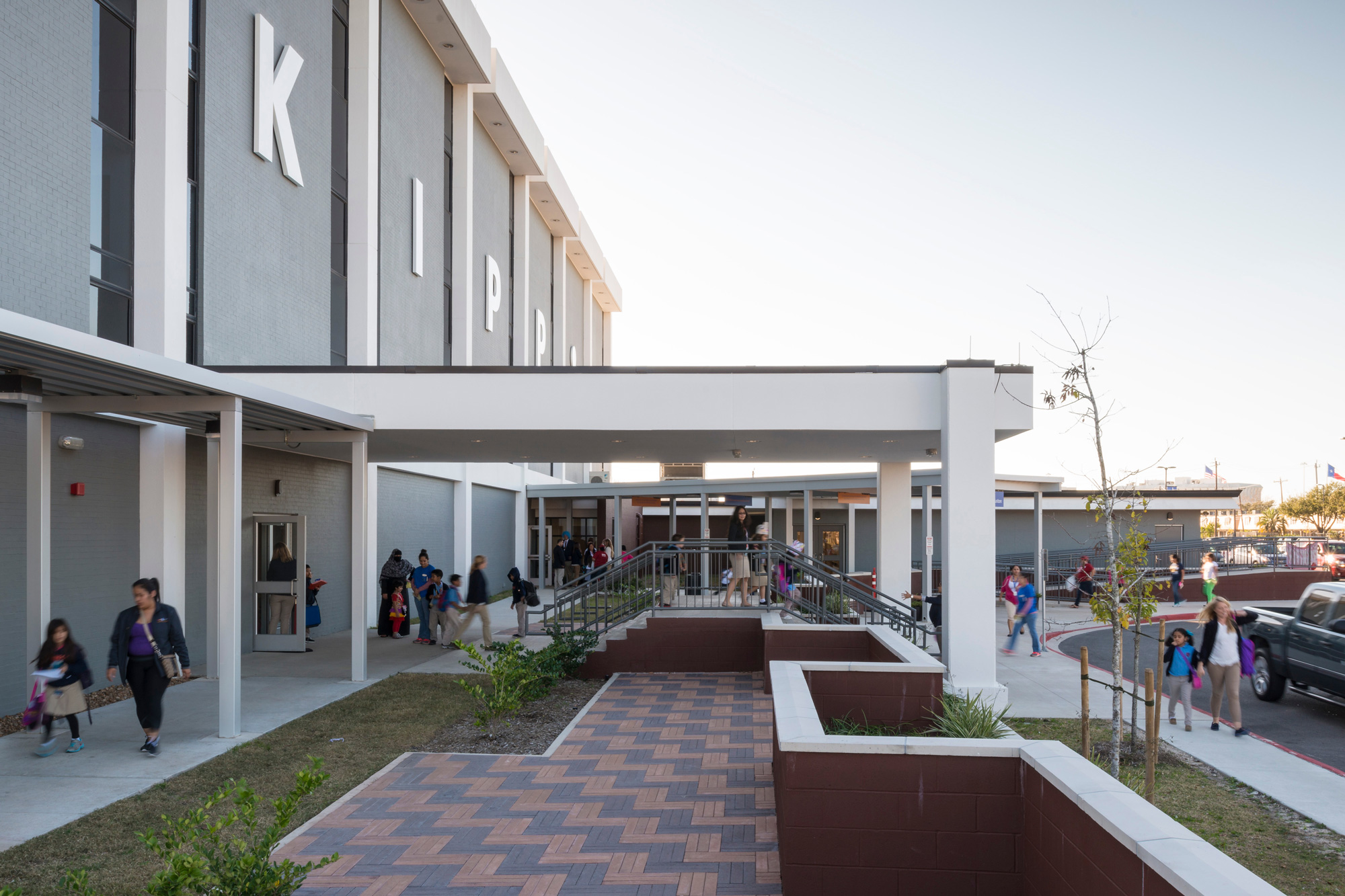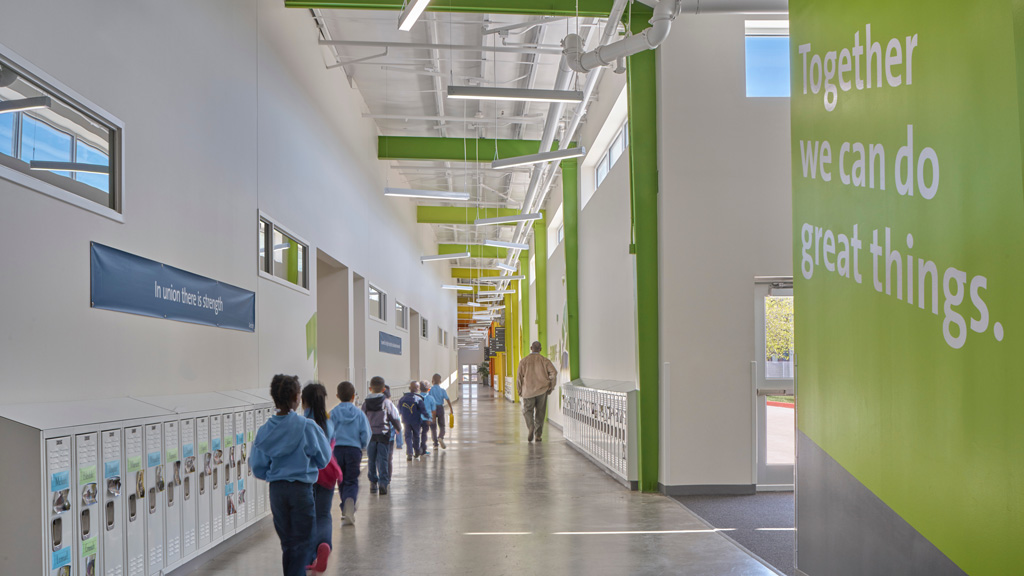Three Considerations for Repurposing Stranded Assets for Education
March 25, 2024 | By Rob Bradford and Hannah Sargent
Each day, the average student attends school for six to seven hours. Over an academic lifetime, that totals more than 15,000 hours. Schools are critical spaces that help shape each of its pupils, so it’s essential to understand how we can design an environment that fosters success on multiple levels.
At the onset of a project, this begins with site selection. Though ground up builds on a greenfield site are often considered the easiest route to pursue, we also have a unique chance to encourage our clients to consider stranded assets for educational institutions during due diligence. In many instances, abandoned buildings can be converted into thriving schools when they prioritize sustainability, focus on community impact, and offer an urban revitalization.
Sustainability
As we evaluate repurposing stranded assets for school conversions, the first benefit that comes to mind is sustainability. In a world where we are growing more conscious of our carbon footprint and environmental impact, adaptive reuse is a logical solution. This, coupled with the recent availability of space due to the pandemic, makes a compelling case for repurposing buildings.
In our work with KIPP, a network of free open-enrollment, college-preparatory public charter schools in low-income communities throughout the United States, we’ve seen that there tends to be greater opportunity to repurpose buildings in the underserved areas they seek to develop. However, when selecting a site, there are important considerations to weigh, including financial viability, flood mitigation, code compliance, and asbestos removal.
Ultimately, many properties sit on the market waiting to be torn down, but they can be attractive to the right buyer – one that is interested in promoting sustainability, working on a more aggressive schedule, and creating renewed value in a community in need.
Community Impact
Schools generate activity and often serve as a community nexus, so it’s necessary to understand the role it will play, beyond a place of education, to residents and stakeholders. The investment in the community should be both immediate and long-term, therefore a proposed property should be assessed to gauge if it has the ability to grow and evolve with the population and its needs.
Additionally, through our research we know that the benefits of social connection and well-being demands new types of amenities at schools. This includes connection to the community and non-academic support services, from affordable meals and housing to mental health and other wraparound services. Providing this offering can further establish a school as a fundamental element of the community.

Urban Revitalization
In addition to the sustainability and community impacts of adaptive reuse for educational institutions, reusing a structure often leads to improvements of nearby roads, sidewalks, and traffic signals to create a walkable area. With a renewed interest in the area comes the opportunity for further developments in the neighborhood and the activation of an area that otherwise would have remained abandoned.
This urban revitalization is exemplified in KIPP CONNECT’s campus in Houston, Texas. The project repurposed an existing hospital on seven acres into a flagship campus with capacity to serve approximately 1,800 students. It was a priority to change the perception of the space from an out-of-commission hospital to an enriching place of learning, which was achieved by establishing the school as a safe educational environment for the neighborhood’s youth. Overall, the substantial renovation added value to an underserved neighborhood and became a symbol of progress.
Overall, this approach has demonstrated success, as we have partnered with KIPP to repurpose more than 940,000 gross square feet for some of the organization’s major campuses.
A Boon to the Community
There are many factors that contribute to a student's success, and the space they receive their education is certainly one. Equally as important as a school is to a student is the significance a school has to the residents and stakeholders of the community it resides in. When designed and executed correctly, adaptive reuse projects for educational institutions not only offer sustainability benefits, but they can be a boon to the community and a catalyst for the revitalization of a blighted urban area.
For media inquiries, email .


